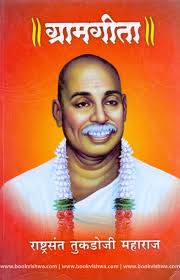VOL- 2, ISSUE- 1, PUNE RESEARCH WORLD (ISSN 2455-359X) JIF 2.54
2.1 WORLD
Area of Article : ALL
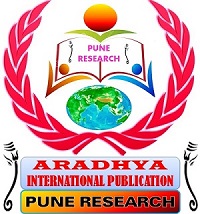
VOL- 2, ISSUE- 1, PUNE RESEARCH WORLD (ISSN 2455-359X) JIF 2.54
2.1 WORLD

VOL- 2, ISSUE- 1, PUNE RESEARCH WORLD (ISSN 2455-359X) JIF 2.54
2.1.1 WORLD
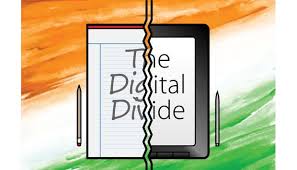
The phase “Digital Divide” has been applied to the gap that exists in most Countries between those with ready access to the tools of information and communication technology and the knowledge that they provide access to and those without such access skills. A further gap between the developed and under developed world in the uptake of technology is evident with in the global community and may be of even greater significant. The relevance of these strategies to developing countries and strategies for reducing the international digital divide are also explored. Libraries have long been essential agents in fostering peace and human values. Libraries are now operating digitally, and their digital services open up a new channel to the universe of knowledge and information connecting cultures across geographical and social boundaries. The phenomenon of digital discrimination prevailing among various social, political and working groups has led to the emergence of digital information rich and digital information poor groups within societies and perhaps in the global environment. This paper discusses how the digital divide can influence to the Indian scenario also to the global world.
Index Terms- Digital
divide, India, Library, Information, Communication, Technology.
VOL- 2, ISSUE- 1, PUNE RESEARCH WORLD (ISSN 2455-359X) JIF 2.54
2.1.2 WORLD

The Information age
also commonly known as the Computer Age or Digital Age, is a period in human
history characterized by the shift from traditional industry that the
industrial revolution brought through industrialization, to an economy based on
the manipulation of information, i.e., an information society. Digital age has
a mammoth impact on the growth of several industries across the globe in terms
of revenue, stability and profitability. It has now paved way to marketing on
social media platforms. Customers in this era, have been so particular on what
they want. They do not get satisfied easily. Hence, adding extra pressure to
the business people. The business people are in a position to grab the nerves
of their customer and satisfying their needs. It comes to down to grabbing the
customer’s feelings. Emotional feelings have a crucial aspect in this era. This
paper furnishes a brief information on the digital era and emotional quotient.
And also, the need of understanding these feelings in this digital world and
various measures to get through the nerves of the consumers. It may be
concluded that emotional feelings do matter in this rapid growing information
age. Digital era is moving forward to a new phase called Experience Age which
is primarily based on the understanding of human minds.
VOL- 2, ISSUE- 1, PUNE RESEARCH WORLD (ISSN 2455-359X) JIF 2.54
2.1.3 WORLD

Digital has been a driving force of change across industries; and the transformation is accelerating – it took five years for Apple to transform the music industry while Uber and Airbnb profoundly reshaped the transportation and hospitality sectors in less than two years. One can measure the pace of digital disruption in months while it takes years for an organization and its people to fully embrace such fundamental changes in the way they operate. Change management is by far the most enduring bottleneck to digital transformation. While technology adoption continues to be top of mind in all digital things, we advocate in this point of view that fundamental changes in leadership and talent attributes are far more critical to successfully embark in the digital journey. As employees change in tandem with digital culture, HR departments must evolve how they acquire, manage and retain talent. Today’s workforces have high expectations. Employees don’t want to be boxed in. Employee retention and productivity is now intrinsically tied to employees’ expectations for a digital business and the changing way they work. HR organizations are exploring a number of new ways to embrace digital transformation for better business.
Key Words: Digital transformation, leadership and Human Resources.
VOL- 2, ISSUE- 1, PUNE RESEARCH WORLD (ISSN 2455-359X) JIF 2.54
2.1.4 WORLD

This paper extends existing Information Systems
perspectives towards Human-Computer Interaction (HCI) to consider HCI within
Digital Infrastructures (DI) – heterogeneous and evolving systems comprising
both IT and its design and user communities. Using the example of a new
interface that has significantly decreased call handling times for sales and
support agents (knowledge workers within a contact center), the paper finds
that DI create an amount of flexibility that enables employees to shape tools
over time. It argues that DI are a useful concept for HCI, as they stress the
socio-technical and evolving nature of IT artifacts.
Keywords: Digital infrastructures Information Systems Call centers.
VOL- 2, ISSUE- 1, PUNE RESEARCH WORLD (ISSN 2455-359X) JIF 2.54
2.1.5 WORLD

Every
successful business has a growing user base and increasing revenues at its
core, growth hacking is responsible for boosting many of these companies to the
next level and helping to improve their success. Companies like Twitter, Face
book and Quora have all brought in experts to help them hack their growth, and
attribute much of their success to growth-hacking strategies. Essentially,
growth hacking is the concept behind high-impact product marketing. Growth
hackers come into a company and try every potential marketing tactic and as
many ideas as possible in order to optimize growth. Growth hacking is meant to
help companies stop wasting valuable money on marketing schemes that just don’t
work. It’s a tricky business these days. Marketing tactics vary greatly across
industries and audiences, and strategies that succeed with one group will fail
with others. Without consistently acquiring and retaining more users, a company
will find it hard to stay afloat. Growth hacking comes up with unique and
creative ways to find out what kinds of marketing efforts are more effective
than others, creating a new business model that actually delivers. So, those
are the basics of growth hacking. But in order to understand it better, it’s
good to take a look at growth hacking strategies in interesting ways to ensure
success.
Keywords: Growth Hacking, Twitter, Face Book, Marketing, Strategies.
VOL- 2, ISSUE- 1, PUNE RESEARCH WORLD (ISSN 2455-359X) JIF 2.54
2.1.6 WORLD

Digital knowledge contains further than the ordinary capability to use software or operate a digital device; it comprises a huge diversity of multifaceted reasoning, locomotive, sociological, and expressive skills, which users want in order to function successfully in digital surroundings. The tasks required in this context include, for example, “reading” instructions from graphical displays in user lines; using digital imitation to create new, meaningful materials from existing ones; building knowledge from a nonlinear, hyper textual navigation; assessing the value and validity of facts; and have a established and truthfulthoughtful of the "rules" that overcome in the cyberspace. This lately emerging concept of “digital literacy” may be used as a measure of the value of learners’ work in digital surroundings, and provide intellectuals and originators with a more operative means of communication in planning better user-oriented surroundings. This inclusive, advancedtheoreticaloutline for digital literacy or digital era, which includes photo-visual literacy; reproduction literacy; branching literacy; information literacy; and socio-emotional literacy.
Keywords:
Digital knowledge, digital device, digital surroundings, digital literacy
VOL- 2, ISSUE- 1, PUNE RESEARCH WORLD (ISSN 2455-359X) JIF 2.54
2.1.7 WORLD

The purpose of this paper is to study role of business
process reengineering to achieve organizational improvement. The firms are
nowadays in search of brand new management approaches for improving their
organizational performance. Technological developments, increasing customers’
expectations and unstable economy make the companies change. Organizational
environment and work place conditions are changing. Adapting to recent
conditions is the only way to compete. Business process reengineering (BPR) is
mainly re-organizing the work processes. BPR changes the methods of process
organizations, the roles of the practitioners, the structure and order of
process levels. There are many challenges that industrial enterprises face to
maintain their competitiveness. Running industrial operation effectively is not
enough in the long run. Capabilities of innovation and utilizing innovativeness
in new ways are required in future competition. Reengineering can help an
aggressive company to stay on top, or transform an organization on the verge of
bankruptcy into an effective competitor. The successes have spawned
international interest, and major reengineering efforts are now being conducted
around the world.
VOL- 2, ISSUE- 1, PUNE RESEARCH WORLD (ISSN 2455-359X) JIF 2.54
2.1.8 WORLD
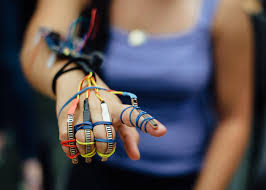
The intention of this paper
is to provide an overview on the subject of Human-Computer Interaction. The
overview includes the basic definitions and terminology, a survey of existing
technologies and recent advances in the field, common architectures used in the
design of HCI systems which includes unimodal and multimodal configurations,
and finally the applications of HCI. This paper also offers a comprehensive
number of references for each concept, method, and application in the HCI.
Keywords: Human-Computer Interaction, Multimodal HCI, Ubiquitous Computing
VOL- 2, ISSUE- 1, PUNE RESEARCH WORLD (ISSN 2455-359X) JIF 2.54
2.1.9 WORLD

Digital is fundamentally changing the way businesses and governments operate from how they interact with customers, citizens and suppliers, to how they enable heir employees. New digital technologies enable not only greater integration and flexibility than ever before, but also the ability for the employees to have greater shares of voice and ability to participate in defending and even creating their own work experience. Digital is thus poised to radically disrupt HR as usual and redefined the future of human resources function in the next decade. Eventually HR and talent process and the technology that enable them with no longer constitute their own domain or even be primarily perform by the central HR function. Rather many aspects of HR and the talent management will become fully embedded in how works get done throughout the organisation. Thereby, becoming an everyday part of doing business. HR department that ignores this transformation could face obsolescence.
Key words: Enhancement of HR, Impact on changing field of HR, Explore reserve
mentoring.
VOL- 2, ISSUE- 1, PUNE RESEARCH WORLD (ISSN 2455-359X) JIF 2.54
2.1.10 WORLD

The present
paper presents results from performance based studies of the author, that
investigated the application of the above digital literacy skills conceptual
model among different groups of users. Results clearly indicate that the
younger participants performed better than the older ones, with photo-visual
and branching literacy tasks, whereas the older participants were found to be
more "digitally-literate" in reproduction and in-formation literacy
tasks. The paper presents findings from recent studies that examined change
over time in digital literacy skills. It sheds light on the cognitive skills
that users utilize in per-forming with digital environments, and provides
educators and software developers with helpful guidelines for designing better
user centered digital environments.
VOL- 2, ISSUE- 1, PUNE RESEARCH WORLD (ISSN 2455-359X) JIF 2.54
2.1.11 WORLD

HR needs to adapt itself to be able to
deal with internal and external challenges. We envision four business trends
that impact the evolution of the HR function: Digital Revolution, Borderless
Business, Personalization and Shifting from focus on cost reduction to
investing in growth. Digital
has been a driving force of change across industries; and the transformation is
accelerating. One can measure the pace of digital disruption in months while it
takes years for an organization and its people to fully embrace such
fundamental changes in the way they operate. Change management is by far the
most enduring bottleneck to digital transformation. While technology adoption
continues to be top of mind in all digital things, we advocate in this point of
view that fundamental changes in leadership and talent attributes are far more
critical to successfully embark in the digital journey.
Key words:- Digital Revolution, Borderless Business, Personalization, internal, external
VOL- 2, ISSUE- 1, PUNE RESEARCH WORLD (ISSN 2455-359X) JIF 2.54
2.1.12 WORLD
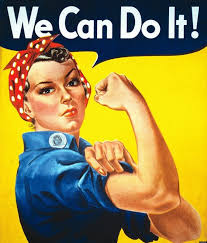
Feminism has been all over the place since women realized their importance in a patriarchal society. While once it found its voice in seminal texts like Mary Wollstonecraft’s A Vindication of the Rights of Women, John Stuart Mills’ The Subjection of Women, Virginia Woolf’s A Room of One’s Own, and Simone de Beauvoir’s The Second Sex, in the 21st century you may come across it on social media, fashion magazines, Hollywood, and pop music etc. Though the medium of expression may have changed, feminism is still going places and supporting women empowerment. In the 21st century, it is facing various threats: be it some people saying that feminism has failed or women themselves being apprehensive of embracing the tag of feminism. More or less, it has always helped women realizing their social roles in patriarchal societies across the globe.
Keywords: New Age Feminism, Pop Culture, Social Media, Hastag Feminism, Meninism, Patriarchy, Feminazi, Feminista.
VOL- 2, ISSUE- 1, PUNE RESEARCH WORLD (ISSN 2455-359X) JIF 2.54
2.1.14 WORLD

Indian Banking System has changed drastically from
Paper Based Banking to E-Banking. Today customers are visiting banks on rarely
basis. Instead of visiting bank, customers prefer to use banking facilities
with the help of computers and internet. There are various types of
technologies are being used by the customers. The researcher has considered
IMPS facility provided by the bankers with the reference to risk. The researcher
has interviewed and studied various risk involved in IMPS. The researcher has collected and analysed
responses through Google questionnaire and contacted respondents though
internet. The present research has focused on present status of IMPS in Indian
Banking System. The light is thrown on awareness about IMPS amongst the
customers. The research paper is concluded with IMPS and risk involved in IMPS
of Private Banks, Public Banks and Co-operative Banks.
Key Words: E-Banking, IMPS, Indian banking system, Risk, Technologies etc.
VOL- 2, ISSUE- 1, PUNE RESEARCH WORLD (ISSN 2455-359X) JIF 2.54
2.1.15 WORLD
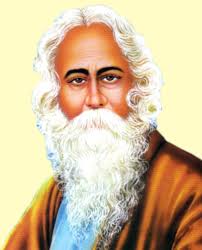
The present paper proposes that Tagore’s poetic expressions are heavily influenced by the philosophy of Kabir; in a way, Tagore is the modern Kabir. In the present work, readers will be able to draw a parallel between Kabir’s poems and those of Tagore. Many streams of Kabir’s Poetic River merge into Tagore’s poetic water fountain and take new hues and shapes. The present work I am undertaking will facilitate the future readers and researchers to understand Tagore and Kabir in a better way.
Keywords: Vedanta Philosophy, Maya, Mahatma, Guru, influence, mystical pantheism, anthropomorphic, Jivan Devata.
VOL- 2, ISSUE- 1, PUNE RESEARCH WORLD (ISSN 2455-359X) JIF 2.54
2.1.16 WORLD
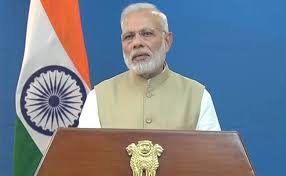
The argument posited in favour of demonetisation is that the cash that would be extinguished would be “black money” and hence, should be rightfully extinguished to set right the perverse incentive structure in the economy. While the facts are not available to anybody, it would be foolhardy to argue that this is the only possibility. Therefore, it is imperative to evaluate the short run and medium-term impacts that such a shock is expected to have on the economy. Further, the impact of such a move would vary depending on the extent to which the government decides to remonetise. This paper elucidates the impact of such a move on the availability of credit, spending, level of activity and government finances.
Keywords: demonetization, cashless transactions, credit, tax evasion
VOL- 2, ISSUE- 1, PUNE RESEARCH WORLD (ISSN 2455-359X) JIF 2.54
2.1.17 WORLD

Language is
the main element of translation as well as literature. The literature in any
language encompasses the entire culture of the society of that language.
Culture is one of the sources in production of language. Language comes form
culture. Language is an indivisible part of culture. Translation is very
closely associated with both language and culture of the society. So it is a
linguistic as well as cultural activity. Language affects thought processes and
it creates a distinctive system of beliefs pertaining to and peculiar to
culture. This shows a direct connection between translation and culture. A
clash and a compromise between two languages in translation lead to the
cross-cultural communication. This clash and compromise take place among
bilinguals and bicultural whose system of beliefs undergoes a liberalizing
process of cultural assimilation. Translation helps to share the ideas,
thoughts and culture of each other and builds the bridge between two societies
of different culture and language.
VOL- 2, ISSUE- 1, PUNE RESEARCH WORLD (ISSN 2455-359X) JIF 2.54
2.1.18 WORLD
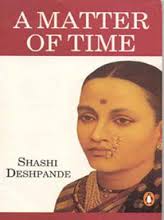
Gender
inequality refers to different analysis or perceptions of individuals based on
their gender. It arises from differences in socially complete gender roles.
Gender systems are generally angled and hierarchical; gender binary systems may
reflect the inequalities that apparent in abundant ambit of circadian life.
Gender inequality stems from distinctions, whether empirically ashore or
socially constructed. Shashi Despande’s A Matter of Time revolves about four
women Manorama, Kalyani, Sumi and Aru who are victims of animosity adapted by
patriarchal society where the measure of woman’s successful her married life,
without which her all other accomplishments are considered worthless warm
association area the admeasurement of woman’s acknowledged her affiliated life,
after which her all added accomplishments are advised worthless. The
accomplished atypical portrays the silent, absorption women, black yet
accomplished adhering to tradition, admitting alive in the present. Admitting
men do not play an active role they are the basis could cause of a lot of the
adversity of women.
VOL- 2, ISSUE- 1, PUNE RESEARCH WORLD (ISSN 2455-359X) JIF 2.54
2.1.19 WORLD
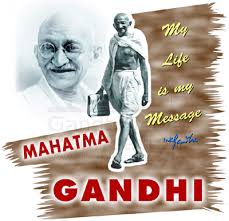
Lect. In
English,It is a great wonder that an empire of the size of Great Britain was
overthrown with S.K.P. Govt. Degree College,sheer non- violence. But it happened to our astonishment; not a
drop of blood was shed in Guntakal.this political movement. Then, what kind of
violence could be there? The answer is that the Anantapuramu Dt.truth of which
Gandhi was a great aspotle, indeed. He
experimented it in Africa with success. He defeated the ogre of imperial
violence through Satyagraha, ‘insistence on truth’ as it is called. It adorned the subtle weaponry of the
Mahatma. Imbued with Christian Virtues,
Hindu and Buddhist Philosophy, he attained the status of a saint who was
worshipped by the masses.
VOL- 2, ISSUE- 1, PUNE RESEARCH WORLD (ISSN 2455-359X) JIF 2.54
2.1.20 WORLD

Andhra Pradesh is always considered as the granary of the south and it has a number of places to live up to its name. For example, Dhanyakataka (now a days it is called as Amaravathi in Guntur district). Dhanya means grain. Methukuseema today's Medak was once known as methukuseema. In Telugu methuku means cooked rice.
Halampura
Present day Alampur was once known as Halampura. In Telugu, Halam means a
plough which is a necessity as an agricultural implement for ploughing the land
in cultivation. The name of Andhra Pradesh itself is synonymous with the word
`Annapooma' which means the goddess of food and also the 'Bowl of food grains.'
VOL- 2, ISSUE- 1, PUNE RESEARCH WORLD (ISSN 2455-359X) JIF 2.54
2.1.21 WORLD

India’s
economic liberalization programme that began in 1991 and aimed at raising the
economy from low – growth equilibrium and putting it on a sustained growth path
targeted a wide range of sectors – from international trade to finance and
infrastructure. Growth of a world class telecommunication system in the country
was inevitable to meet the demands of the economic and it becomes a necessity
rather than a luxury in the globalized scenario. The economic policy forced the
Indian government to shift telecommunications secondary status to priority
status. As a result after 1990, India witnessed a paradigm shift in
telecommunication policies. Further in the early 1990’s due to technological
changes and challenges of globalization, the natural monopoly in the telecom
sector was challenged in countries like USA and UK1. This resulted
in the growth of both private and public telecom sectors worldwide which led to
competition and greater consumer welfare.
VOL- 2, ISSUE- 1, PUNE RESEARCH WORLD (ISSN 2455-359X) JIF 2.54
2.1.22 WORLD

The term derivatives can simply be understood as those
items that do not have their own independent values, rather they have derived
values. Derivatives have a significant place in finance and risk management .A
Derivative is a financial instrument whose pay off is derived from some other
Asset which is called an underlying asset. Ex: In case of a stock option, the
underlying asset is share (stock) of company.
The value of stock option depends on the value of share options are more complicated derivatives .There are large number of simple derivatives future or forward contracts or swaps. Firms always look for ways and means of reducing their risk .Derivatives are tools to reduce a firm’s risk exposure. A firm can do away with unnecessary parts of risk exposure and convert exposure. A firm can do away with un-necessary parts of risk exposure and even convert exposures into quite different forms by using derivatives.
VOL- 2, ISSUE- 1, PUNE RESEARCH WORLD (ISSN 2455-359X) JIF 2.54
2.1.23 WORLD
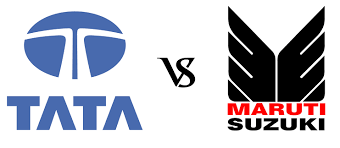
The automobile sector plays a vital role in the development of a nation. India is one of the largest and fastest growing countries in automobile sector. The research covers customer satisfaction towards Maruti and Tata Motor cars. The present study was carried to identify the relationship between demographic factors and customer satisfaction. The positive influence of customer satisfaction makes the customers to be loyal to the company. The population of the study comprises the total population of five cities in Andhra Pradesh. Random sample was carried on 1000 customers out of which 500 are Maruti users and 500 are Tata Motor car users. A well designed questionnaire was administered for the study. Chi-square, ANOVA, Regression, F-test & Z-test were used to analyse the data. The analysis helps in providing improvements in the pertinent areas of Maruti and Tata Motor cars.
Key words: Automobile Industry, demographic factors, customer satisfaction, positive influence, Quality, service.
VOL- 2, ISSUE- 1, PUNE RESEARCH WORLD (ISSN 2455-359X) JIF 2.54
2.1.24 WORLD

Learning Disabled children are known for their learning difference as well as their behavioural differences. The factors which affects these children in learning effectively are mostly their peculiar behaviours and set of behavioural patterns from which these children can be easily isolated from the normal children in primary level of classrooms. According to their IQ level, learning disabled children are managing their behaviours in high school, higher secondary and higher education. The reason for school drop outs are mainly because of their behaviour and poor understanding of the teachers on their behavioural patterns and issues. Hence, this study analyses and brings out the behavioural traits of learning disable children for the benefit of the same.
Key words: Learning Disability, Behavioural pattern.
VOL- 2, ISSUE- 1, PUNE RESEARCH WORLD (ISSN 2455-359X) JIF 2.54
2.1.25 WORLD
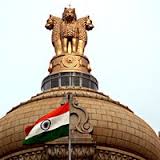
Organized human living rests on certain well accepted,
“Do’s and Don’ts”; is the administrative life in all civilized societies of the
world. The public servant is everywhere expected to observe a specified ‘code
of conduct’. His reward for such observance is his continuance in his post and
his admission to the numerous facilities incorporated in his service
conditions. Any lapse, whether conscious or ‘unconscious, minor or major
involves a breach of discipline and is subject to punishment which could vary
from a simple warning to overnight dismissal. The ‘conduct rules’ as also the
‘disciplinary Procedure, therefore occupy a very important place in the realm
of civil service network. Irrespective of his place of work, there is always a
framework of moral and functional restraints within which a civil servant
works; in fact this fact makes him less than an average citizen. The
disciplinary procedure, however, differs both in theory and practice from one
country to another. It could originate as legal, constitutional or
administrative functions; and this in turn would influence the nature of
procedure. However, both the, ‘conduct rules’ and the ‘disciplinary procedure’
equally reflect the social and political aspects.
VOL- 2, ISSUE- 1, PUNE RESEARCH WORLD (ISSN 2455-359X) JIF 2.54
2.1.26

Advertisers are
expected to shift and spend millions in internet advertising in the coming
years than TV, print ads and other traditional advertising media. With the
rapid growth in technology, the internet is becoming an important one stop
point for consumers in finding most of their needs. Be it communication,
entertainment, shopping, information search, internet serves as a panacea for
all their requirements. Many consumers are online every day for their personal
work, but do they notice the ads, banners displayed on that webpage and most
important their recall value. Digital Marketing (also Online Marketing,
Internet Marketing or Web Marketing) is a collective name for marketing
activity carried out online, as opposed to traditional marketing through print
media, live promotions, and TV and radio advertisement. The rapid growth of
Digital Marketing Industry is a direct consequence of the global phenomenon
that is the Internet, and effectiveness of Digital Marketing channels in
generating revenue and awareness. Compared to traditional methods of
advertising, Digital Marketing offers rather realistic costs (particularly
important for small- and medium-size businesses and start-ups), accurate
targeting and excellent reporting.
Keywords: Digital marketing, SEO, SMM, Mobile Marketing
VOL- 2, ISSUE- 1, PUNE RESEARCH WORLD (ISSN 2455-359X) JIF 2.54
WORLD

विभिन्न श्रेणीतील बाजार
केंद्रांमधील वस्तू व सेवांच्या गुणवत्तेत केवळ भिन्नता आढळून येत नसून वस्तू
सेवांच्या दुकानाच्या संख्येमध्ये सुद्धा भिन्नता आढळून येते. तिवसा तहसीलमधील
एकून १२ आठवडी बाजार केंद्रांचे तीन श्रेणींमध्ये वर्गीकरण करण्याचा प्रयत्न केला.
तिवसा तहसीलमध्ये दोन प्रथम श्रेणीचे, तीन दृतीय श्रेणीचे आणि सात तृतीय श्रेणीचे
बाजार केंद्र आहेत. तिवसा तहसीलमधील बाजार केंद्रांचा दर्जा व तेथील वाहतूक सुविधा
यांचा धनात्मक घनिष्ट सहसंबंध आढळून येतो. तिवसा तहसीलमधील प्रथम व तृतीय
श्रेणीच्या आठवडी बाजार केंद्रांचे विवरणात्मक प्रारूप नियमित ते एकसमान असून
दृतीय श्रेणीच्या आठवडी बाजार केंद्राचे गुच्छ प्रारूप आढळून येते.
VOL- 2, ISSUE- 1, PUNE RESEARCH WORLD (ISSN 2455-359X) JIF 2.54
WORLD

Lknj‘’kks/kfuca/kke/;s HkkjrkP;k tkxfrd cVkVk fu;kZrhrhy
LFkkukpk vk<kok ?ksryk vlwu] Hkkjrkyk cVkVk o cVkV;kiklwups inkFkZ bR;knhP;k
fu;kZrhe/;s d’kh la/kh vkgs] gh la/kh d’kh ok<fork ;sbZy ;kpk vH;kl dsysyk
vkgs- rlsp HkkjrkP;k cVkVk fu;kZrhlkBhP;k cyLFkkukapk ;sFks vH;kl dsysyk vlwu] cVkVk
fu;kZrhrhy ik;kHkwr lqfo/kkaP;k dks.kR;k vMp.kh ‘’ksrd&;kaleksj o fu;kZrdka
leksj vkgsr] R;k d’kk nwj djrk ;srhy vkf.k cVkVk fu;kZrhr ‘’kklukP;k dks.kR;k
/kksj.ks o laLFkkaeqGs lgk¸; gksr vkgs- bR;knh ckchapk vH;kl lnj
‘’kks/kfuca/kkr dj.;kr vkysyk vkgs-
VOL- 2, ISSUE- 1, PUNE RESEARCH WORLD (ISSN 2455-359X) JIF 2.54
WORLD

nqljs egk;q) 16 vkWDVksacj 1945 jksth laiY;kuarj vUu o Ñ”kh la?kVusph LFkkiuk dj.;kr vkyh- R;keqGs 16 vkWDVksacj gk fnol ^^tkxfrd vUu fnu** Eg.kwu txHkj lktjk dsyk tkrks- LFkkiusiklwup Hkkjr ;k la?kVuspk lnL; vkgs- vUu gh eqyHkwr xjtkaiSdh lokZr egÙokph xjt vkgs-
vUu/kkU; o
yksdla[;k gk laca/k izkphu vkgs- FkkWel ekYFklus gk laca/k Li”Vi.ks ekaMyk-
yksdla[;kok< gh Hkqehrh; i)rhus gksrs- rj vUu/kkU;kph ok< gh xf.krh;
i)rhus gksrs- vkt txkph yksdla[;k 7 vCtkgwu vf/kd vkgs- ;k izpaM yksdla[;sr
nksu osGk iqjsls vUu ns.ks gs txkleksj Qkj eksBs vkOgku vkgs- R;krY;k R;kr
Hkkjrkph yksdla[;k 125 dksVh vkgs o R;k yksdla[;sr njo”khZ ,d rs nhM dksVhauh
ok< gksr vkgs-
VOL- 2, ISSUE- 1, PUNE RESEARCH WORLD (ISSN 2455-359X) JIF 2.54
WORLD
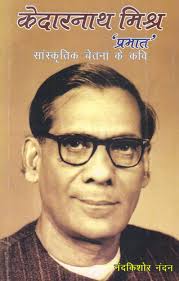
oLrqr% dksbZ
Hkh lkfgR;dkj vrhrdkyhu ,sfrgkfld ?kVukvksa ds vk/kkj ij tc viuh dkO; ltZuk
djus ds fy, rRij gksrk gS] rc mlds le{k ,d fo'ks"k pqukSrh ;g gksrh gS fd
vk/kqfud dkyhu leL;kvksa dks Hkh fdlh&u&fdlh :i esa izLFkkfir fd;k tk
lds A bl rjg dfo iqjkru bfrgkl dh ?kVuk ds /kjkry ij vius ;qx dh fLFkfr;ksa dks
Hkh fpf=r djus dk iz;kl djrk gS A bl iz;kl esa mls lQyrk rHkh feyrh gS] tc og
bfrgkl ds ek/;e ls uohurk dks igpkuus dk dk;Z djrk gS A egkdfo izHkkr us ;n;fi
ikSjkf.kd vkSj ,sfrgkfld ?kVukvksa dks ysdj vius vyx&vyx [k.MdkO;ksaa dh
ltZuk dh gSS ] ysfdu lR; rks ;g Hkh gS fd mUgksaus vrhr ds /kjkry ij [kMs gksdj
orZeku dks dgha Hkh Hkqyk;k ugha gS A vr% jk"Vªh; &psruk dh n`"Vh
ls jktuhfrd] lkaLd`frd vkSj lkekftd bu rhu i{kksa ls lEc/n vusd fLFkfr;ksa dks
mUgksaus xzg.k fd;k gS A ;gh fHkUu&fHkUu fLFkfr;kWa rkfRod n`f"V ls
egkdfo ^^izHkkr** ds [k.MdkO;ksa esa vuk;kl gh vkrh gqbZ pyh xbZa gSa A ftues
ls ,d vrhrdkyhu egkekuoksa ds vkn'kZ dk izLrqrhdj.k gSa A
VOL- 2, ISSUE- 1, PUNE RESEARCH WORLD (ISSN 2455-359X) JIF 2.54
WORLD

lkfgR; dk lcls izHkkodkjh ek/;e ukVd gSA ukVd ds
}kjk ge ikBd ds eu esa fl/ks izos'k djrs gSA blh rjg dk iz;kl losZ'ojn;ky
lolsuk us ^yMkbZ* ukVd }kjk fd;k gSA ukVd dk izeq[k ik= lR;ozr fgalk]
Hkz"Vkpkj] >xMs] Qlkn] >wB] Qjsc] csbZekuh] /kks[kk/kMh vkSj eDdkjh
ds fo#/n yMus dks tc fudyrk gS rks mldk dksbZ Hkh lkFk ugha nsrk cl daMDVj de
iSls ysdj fcuk frdhV fn;s fdlrjg mfpr txg mrkjrs gS] fojks/k djus ij fojks/k
djus okys dks gh bl O;oLFkk esa 'kkUr jgus ds fy, dgk tkrk gSA jk'ku n¶rj tkus
ds mijkUr ogk lgkc fdlrjg Hkz"Vkpkj djds yksxksa dks jk'ku dkMZ cVkrk gSA
;gh ckr lekpkj i= esa Niokus ds fy, tkus ij ^lR;iFk* lekpkj i= dk lEiknd fdlrjg
vQljksals feyk gksrk gS ;g Li"V gksrk gSA ljdkjh vLirkyksa esa lkekU; xjhc
dks txg ugha feyrh ij ea=h ds fj'rsnkj dks fdlrgj rqjUr txg feyrh gS vkSj mPp
izfr dh lqfo/kk Hkh izkIr gksrh gSA egkfo|ky;hu ;qok oxZ fdlrjg v/;kid vkSj ?kj
ds cqtqxZ yksxksa ls is'k vk jgk gSA ifj.kke Lo#i orZeku ;qod fdlrjg HkVd jgk
gSA ns'k ds dbZ ckck egar] egkjkt] xfjcksa dks va/kJ/nk ds egk/;els fdlrjg
Qlkrs gS] dqN yksx vkJeksa ds ukeij dkyk /ku fdlrjg lQsn djrs gS ;g ^ijyksd vkJe*
ds ^egs'ojkuUn* }kjk le>k;k gSA orZeku esa pkjks rjQ ;gh ifjfLFkfr fn[kkbZ
nsrh gSA orZeku esa LokHkhekuh vkneh dks bZl "kM;=oknh] iwthoknh]
lRrk/kkjh vkSj pkiywlh djus okys yksxksa }kjk fdlrjg izrkafMr vkSj viekfur fd;k
tk jgk gSA bldk fp=.k losZ'ojn;ky lDlsukus lR;ozr ds }kjk djus dk iz;kl fd;k gS
vkSj ;gh vkt dh orZeku =klnh gSA
VOL- 2, ISSUE- 1, PUNE RESEARCH WORLD (ISSN 2455-359X) JIF 2.54
WORLD
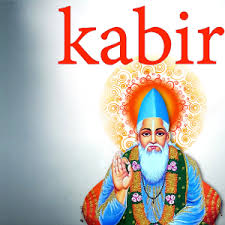
VOL- 2, ISSUE- 1, PUNE RESEARCH WORLD (ISSN 2455-359X) JIF 2.54
WORLD
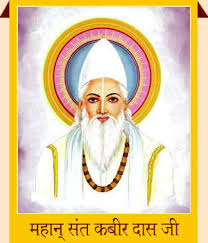
fo’o esa
ekuo izxr ra=Kku ds lkFk lkFk HkkSfrd lq[k- lqfo/kk ls laiUu thou;kiu dj jgk
gSA varfjdrk esa vxj >kWdrs gS rks lekt ruko] ?kqVu la=kkl }a} ls xzLr gSA
ekuo fodkl ds QyLo#i lH;rk vkSj laLd`rh esa mYys[kuh; izxrh gqbZ gSA ysfdu ekuo
ckg; ifjfLFkfr;ksa ls =Lr gSA og vanj ls dqN vkSj gs ckgj ls dqN mlds orZu es
vkSipkfjdrk gS og pkgdaj Hkh vius vki dks ;FkkFkZ #i esa izLrqr ugh dj ikrkA
vkius dks’k esa [kks;k ekuo nqljks ds ckjs esa tkuuk n[kyvankth ekurk gS
O;fDrLora=rkds uke ij og vius esa eLr jgrk gSA vyxko] oSeujL; ng’kr] ijk;kiu
uhjlrk us Msjk tek j[kk gSA
VOL- 2, ISSUE- 1, PUNE RESEARCH WORLD (ISSN 2455-359X) JIF 2.54
WORLD

Ekkuokf/kdkj gh Hkkjrh;
jkT;?kVusus Hkkjfr;kauk fnysyh eqyHkwr ns.kxh vkgsr- ;k ekuokf/kdkjkewGsp
laiw.kZ fo”okr fofo/krsr ,drk tir Hkkjr fodklkyk xol.kh ?kkyr vlY;kps vktferhyk
fnlwu ;srs- ;k ekuokf/kdkjkykp O;DrhLokra= vls lq/nk EgVY;k tkrs- Hkkjrh;
jkT;?kVusP;k ifjPNsn 3 o 4 e/;s ;kph foLr`r ekghrh vkiY;kyk feGrs- ,dq.kp
^^ekuokyk lq[kh laiUu thou tx.;klkBh T;k T;k vf/kdkjkph vko”;drk vlrs rs loZ
vf/kdkj Eg.ktsp ekuokf/kdkj ekukos ykxrs**- ijarq vktferh i;Zr Hkkjrh;
Lokra«;kyk 60 o’kkZpk dky[kaM yksVwu xsY;kojgh ekuokf/kdkj gk Hkkjrh;kalkBh
nq/kkjh ryokj ;k U;k;kps iq<s vkysyh fnlrs- R;keqGs dkgh fBdk.kh
O;DrhLokra«;kpk vko vkf.kr vkjksi izR;kjksi ykohr Hkkjrh; dk;|kus fnysY;k
f”kLrhyk dkGhek iklY;k tkrks-rj dkgh fBdk.kh Hkkjrh; ukxjhd Eg.kwu R;kP;k
gDdkpsgh guu dsY;k tkrs- ekuokf/kdkjkpk okij Hkkjrh; djhr vlys rjh cgqrka”k
osGk gtjtckchi.kkewGs fdaok eksBsi.kkpk vko vkf.kr fdaok oS;Drhd oSeUlkrwu
ekuokf/kdkjkpk nqjmi;kksx dsY;k tkrks- ;k ekuokf/kdkjkpk lkeuk izR;sdkykpk
djkok ykxr vlyk rjh Hkkjrh; “kkrark o lqO;oLFksP;k n`’Vhdks.kkrwu Hkkjrkps
vk/kkjLraHk vlYksY;k iksyhl iz”kkl.kkiq<s ek= ekuokf/kdkj gs vkOgk.k Eg.kqup
mHks jkgrkauk fnlrs- Eg.kwup iksfyl iz”kklu iq<s ekuokf/kdkj dks.krh
vkOgk.ks mHkh djrkr ;kpk “kks/k ?ks.ks egRokps Bjrs-
VOL- 2, ISSUE- 1, PUNE RESEARCH WORLD (ISSN 2455-359X) JIF 2.54
WORLD
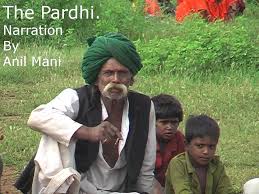
ikj/kh lektkr vk<Gwu
;s.kkÚ;k /keZJ/nk o /kekZpj.k fu;e i/nrh ;k loZlkj/kj.ki.ks brj vkfnoklh tekrh
izek.ksp vlY;kps fnlwu ;srs R;kP;k thoukoj /kekZpk eksBk ixMk vlysyk fnlwu
vkyk-R;kaps HkkoukRed o nSuafnu thou laiw.kZi.ks /keZk’kh lacf/kr vkgs ,o<sp
ukgh rj lkekftd] vkfFkZd] lkaLd`frd U;k;fo”k;d thou gs R;kaP;k /keZrRok’kh
vuq#i >kysys fnlrs /kekZps mYya?ku gksbZy vls orZu rs djr ukghr- ikj/kh
lektkps vls dks.krsgh vax ukgh dh] T;kP;koj /kekZpk ixMk ukgh ;k lektkr /kekZps
dk;Z vR;ar mi;qDr vkgs- lkekftd fu;a=.k lekt la?kVu] vkfFkZd fdz;sph lq#okr]
f’kdkj] pksjh bR;knh izlaxh ?ks.;kr ;s.kkjh dkGth o dkSy ;kyklq/nk /kekZpkp
vk/kkj vlrks-
VOL- 2, ISSUE- 1, PUNE RESEARCH WORLD (ISSN 2455-359X) JIF 2.54
WORLD
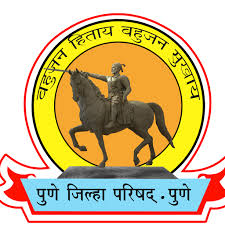
vxnh
izkphu dkGkiklwu Hkkjrh; [ksMsxkao gh Lok;Rr vkgsr- izkphu Hkkjrke/;s xzke
laLFkk pkyfo.;klkBh Lora= vkf.k Lok;RkRkk gh egRoiw.kZ oSf’k”V;s jkfgyh vkgsr-
rFkkfi dkGkP;k vks?kke/;s xzke Lok;Rrrk u”V gksmu vf/kdkr vf/kd lRrsps
gLrkarj.k lkoZHkkSe jkT;kaP;k gkrh dsanzhr gksr xsys vkf.k vkt [ksM;kaph
Lok;aaRrrk laiw.kZi.ks lkoZHkkSe ‘kklukP;k gkrh vkyh-
fczVh’kkaP;k jktoVhrhy iz’kkludkGkr]
Hkkjrke/;s LFkkfud LojkT; laLFkkaps iqu#Tthou dkj.;kps dkgh iz;Ru >kys-
R;kpkp ifj.kke Eg.kwu vkt uxjikfydk] ftYgk ‘kkys; eaMGs] rkyqdk LFkkfud eaMGs
vkf.k xzke iapk;rh vkfLrRokr vkY;k vkgsr- fonHkkZaP;k xzke iapk;rh vkf.k U;k;
iapk;rh 1946 e/;s xBhr dj.;kr vkY;k rlsp R;k ejkBokM;ke/;s 1941 iklwu ikp gtkj
is{kk tkLr yksdla[;k vlysY;k xkoke/;s xzke iapk;rh dk;ZHkkj lq# >kyk-
iqohZps ckWEcs LVsV iquZxBhr >kY;kuarj 1958 e/;s xzke iapk;r dk;nk ikl
>kyk- lnjhy dk;|kuqlkj xzkeiapk;r eaMGs vkf.k ikp fdaok R;kis{kk vkf/kd iap
usewu R;kaph U;k; xV iapk;rh r;kj dj.;kr vkY;k- iq<s 1961 uarj ftYgk ifj”kn
vkf.k iapk;r lferh dk;nk ikl gksmu rks 1 es 1962 iklwwu vaeykr ;s.;kl lq#okr
>kyh- izLrqr ‘kks/kfuca/kke/;s ftYgk ifj”knk e/khy iz’kklu O;oLFkk d’kh
O;ofLFkr vkgs] fdaok ftYgk ifj”knsrhy iz’kkldh; lajpuk d’kh yksd’kkghl vuqdwy
vkgs gs fo’kn dj.;kpk iz;Ru dsysyk vkgs-
eq[; laKk
% egkjk”Vªª] ftYgk ifj”kn] xzkeiapk;r iapk;r lferh] cyoar jk; esgrk lferh] eq[;
dk;Zdkjh vf/kdkjh bR;knh-
VOL- 2, ISSUE- 1, PUNE RESEARCH WORLD (ISSN 2455-359X) JIF 2.54
WORLD
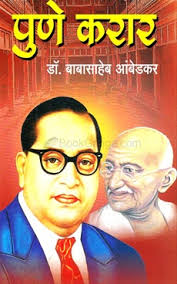
nqlÚ;k xksyest ifj”knse/;s tsaOgk fczVh’kkauh nfyrkauk Lora«k ernkjla?k ns.;kph ?kks”k.kk dsyh] rsaOgk MkW- ckcklkgsc vkacsMdjkauh fczVh’kkaph cktw ?ksryh vkf.k nfyrkauk Lora= ernkjla?k ns.;kcÌy R;kaP;k fu.kZ;kps leFkZu dsys- ijarq xka/khthauh ek= fczVh’kkaP;k ;k fu.kZ;kyk dMkMwu fojks/k dsyk dkj.k R;kaP;k ers ;k fu.kZ;keqGs nfyrkaP;k gkrh eksBh lÙkk ;sbZy vkf.k fganw lektkps fo?kVu gksbZy- gh lcc MkW- vkacsMdjkauk ekU; uOgrh- Eg.kwu egkRek xka/khthauh rRdkyhu fczVh’k iarç/kku ts- jkels eWdMksukYM ;kaP;k fczVh’k ljdkjP;k ?kVuse/;s tkrh; fuokMk ;k lnjk[kkyh nfyrkauk Lora= ernkjla?k ns.;kP;k fu.kZ;k fo:) fnukad 20 lIVsacj 1932 iklwu iq.;kP;k ;sjoMk dkjkx`gk e/;s vej.k miks”k.k lq: dsys- R;keqGs laiw.kZ ns’kkr xka/khthaps çk.k okpfo.;klkBh ns’kHkjkr ,dp [kG[kG ektyh- MkW- ckcklkgsc vkacsMdjkauh R;kauh R;kaph Hkwfedk cnywu ek?kkj ?;koh ;klkBh R;kaP;koj ncko ok<w ykxyk- ijf.kker% 24 lIVsacj 1932 jksth fganw usrs o nfyrkaps usrs ;ke/;s rMtksM gksÅu ,d Bjko ikl dj.;kr vkyk tks ßiq.ks djkjÞ ;k ukokus izfl) vkgs- lnjhy Bjkokuqlkj 25 lIVsacj 1932 jksth eqcbZ e/;s ,d lkoZtfud cSBd cksyko.;kr vkyh o tkghj dj.;kr vkys dh] ßfganwae/;s tUeko:u dks.kkykgh vLi`’; eku.;kr ;s.kkj ukgh vkf.k R;kauk loZ lkekftd laLFkkae/;s brj fganw izek.ksp loZ gDd vlrhy-Þ Hkkjrh; nfyr pGoGhrhy gk ,sfrgkfld Bjko iq<s pkywu nfyrkauk yksd’kkghr jktdh; lŸkse/;s lgHkkxh d:u ?ks.;klkBh ik;kHkwr eqyk/kkj Bjyk- izLrwr ‘kks/kfuca/kkpk gszrw gk nksUgh cktwaMdhy usR;kae/;s >kysY;k ppsZe/kwu dk; Qfyr lk/; >kys o dk; uqdlku >kys ;kpk FkksMD;kr mgkiksg dj.;kpk iz;Ru dsysyk vkgs-
eq[; laKk%& iq.ks djkj] nfyr
oxZ] Lora= ernkjla?k] egkRek xka/kh] MkW- ckcklkgsc vkacsMdj] jktdh; lerk]
lkekftd lerk] lkekftd gDd bR;knh-
VOL- 2, ISSUE- 1, PUNE RESEARCH WORLD (ISSN 2455-359X) JIF 2.54
WORLD
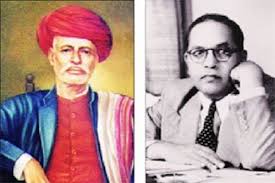
Hkkjrh; lektke/;s izkphu
dkGkiklwu vkti;Zar fL=;kaps LFkku usgeh nq¸;e jkfgys vkgs- oSfnd dkGke/;s
fL=;kauk f’k{k.kkpk gDd] izkS< fookg i)rh] lrh izFkk ulyh rjh dqVqacke/;s
frps LFkku iw:”kkis{kk usgeh nq¸;e gksrs- eqykpk tUe gks.;klkBh izkFkZuk dsY;k
tkrkr- i.k eqyhpk tUe gks.;klkBh ,dgh izkFkZuk dsY;kpk mYys[k feGr ukgh- mRrj
oSfnd dkGke/;s frps loZ gDd ukdk:u /keZ o fir`lRrkd ;k pkSdVhr cafnLr dsys-
b-l- iwoZ 6 O;k ‘krdke/;s fofo/k /keZ laiznk;kpk mxe >kyk- ;k /keZ
laiznk;kus mRrj oSfnd dkyhu L=h thou i)rhyk vkOgku fnys- xkSre cq) o pkokZd ;kauh
lerspk iqjLdkj dsyk- xkSre cq)kauh L=h o iq:”k ;k nks?kkaukgh /kekZe/;s izos’k
fnyk- R;kauh fuokZ.k inklkBh fL=;kgh ik= Bjfoys- xqIrRrksj dkGe/;s lrh izFkk]
ckyfookg] iMnk i)r ;k izFkspk mxe >kyk- ;k izFkseqGs L=h Lokra«;koj vusd
ca/kus vkyh e/;;qxhu dky[kaMke/;s vusd larkus L=h lq/kkj.ksps iz;Ru dsys- i.k
fo’ks”k vlk L=h thoukoj ifj.kke >kyk ukgh-
VOL- 2, ISSUE- 1, PUNE RESEARCH WORLD (ISSN 2455-359X) JIF 2.54
WORLD

o/kkZ
ftYg;krhy dkjatk rkyqD;kP;k iwoZ Hkkxkl toG toG 7 fd-eh- varjkoj Bk.ksxko
ukokps ,d NksVs’ks izkphu xko vkgs- ;k xkokrhy ukY;kP;k dkBkoj txnack ekrsps
,dk dkG;k ik”kk.kkr dksjysys ,d eafnj vkgs- R;k eafnjkyk ijdksV vlqu R;kph
cka/kuh gsekMiaFkh LFkkiR; in/rhus >kyh- eafnjkps uko txnack eafnj vlys
rjhgh xHkZxqgkr vlysY;k f’kofyaxko#u gs ’kaHkqjktkps eanhj vlkos
vls fnlqu ;srs- njo"khZ uojk=h vkf.k egkf’kojk=h rlsp Jko.k efg.;ke/;s
;sFks ;k=k Hkjrs- vktqcktwps Hkkohd eafnjkr ;sÅu txnack ekrsps vkf.k
f’kofyxkaps n’kZu ?ksrkr-
VOL- 2, ISSUE- 1, PUNE RESEARCH WORLD (ISSN 2455-359X) JIF 2.54
WORLD
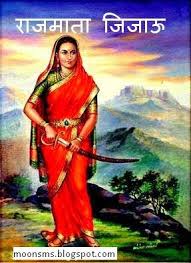
lrjkO;k 'krdkr egkjk"Vªkr
N=irh f'kokthegkjktkaP;k usr`Rokr ejkB;kaps Lora= jkT; mn;kl vkys- ;k dk;kZr
f'kokthegkjktkauk ekrksJh fttkckbZph izsj.kk vkf.k ekxZn'kZu eksykps Bjys-
fttkckbZ dsoG iw=kyk tUe ns.kkjh o nkfx.;kpk lksl fejfo.kkjh lkekU; L=h uOgrh]
rj vkiY;k dr`ZRokus lekt ?kMfo.kkjh ;qxizorZd L=h gksrh- Lor%P;k ekxZn'kZuk[kkyh
ejkB;kaps la?kVhr LojkT; mHkk:u fttkckbZus LojkT;kP;k dkjHkkjkrgh fgfjfjus Hkkx
?ksryk- R;kpcjkscj rRdkyhu lkekftd O;oLFksr izpfyr vlysY;k cqjlVysY;k izfrxkeh
fjrhfjoktkaoj dBksj izgkj d:u egkjk"Vªkr lkekftd lq/kkj.kspk ik;k ?kkryk-
VOL- 2, ISSUE- 1, PUNE RESEARCH WORLD (ISSN 2455-359X) JIF 2.54
WORLD
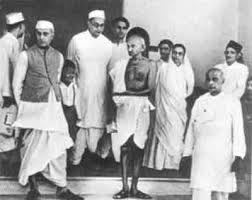
Hkkjrkr jk"Vªh; dkWxzzslpk vey izLFkkfir gksr
vlrkauk fonHkkZrhy dkWxzslps lkros vf/kos’ku 1891 e/;s ukxiqjyk Hkjfo.;kr vkys-
b-l 1890 P;k dydRrk dkWxzsle/;s oÚgkMe/kqu 29 izfrfuf/k xsys gksrs- ;k dkWxzsl
vf/kos’kukr iq<hy dkWxzsl enzkl vxj ukxiqj ;sFks Hkjfo.;klkBh dkWxzsl
usR;kauk fopkj dj.;kl vf/kdkj ns.;kr vkyk- ;k fopkjkaP;k ek/;ekrqu ’ksoVh dkWxzslps
vf/kos’ku ukxiqjyk ?ks.;kps Bjys-1
ukxiqjps
izfl/n cWfjLVj lh- ukjk;.k Lokeh ;kauh Lokxrk/;{k fuoM.;kr vkys R;kauk lgk¸;
dj.;klkBh izks- HkxhjFk izlkn] izks- d`”.kjko ns’kikaMs] jk-c- eq/kksGdj] Jh-
eksjksiar tks’kh enr djhr gksrh- vf[ky fgUnqLFkkukrqu vkysY;k 1242 iSdh 812
izfrfu/kh gtj gksrs-
VOL- 2, ISSUE- 1, PUNE RESEARCH WORLD (ISSN 2455-359X) JIF 2.54
WORLD

Ikk.kh Eg.kts thou gs [kjsp vkgs- itZU;ty lap; i/nrh gh thounk;h
lathouhp vkgs- ek.klkP;k vfLrRokaP;k ikÅy[kw.kk ;k i`F;hoj vlrhy rksoj ;k
lathouhpk Bsok tkx.;klkBh vki.k dVhc/n gks.;kph furkar vko’;drk vkgs- dkj.k
1951 lkyh Hkkjrkr njMksbZ 5147 D;qchd feVj ik.kh miyC/k gksrs- 2001 e/;s gsp
izek.k 1820 oj vkys- ;sR;k 2015 e/;s gsp izek.k 1340 D;qchd feVjoj ;sbZy-
vki.kkl rsOgk ik.;kps vf/kdp nqfHkZ{k tk.kosy- 2050lkyki;Zar 60 ns’kkrhy 7 vCt
yksdkauk ik.;kaph eksB;k izek.kkar leL;k tk.kosy R;kr Ik;kZoj.kkarhy cnykeqGs
vk.k[kh Hkj iMr tkbZy-gh leL;k tfVygh gksbZy-
Ikk.kh feG.;kpk ,deso L=ksr
Eg.kts ikolkps ik.kh- ek.klkP;k ?kjxqrh] ‘ksrhP;k] ?kjcka/k.khP;k] vkS|ksfxd
xjtk iw.kZ dj.;klkBh o tukojkauk ykx.kkjs ik.kh]ckxk]rj.k ryko ;klkBh ykx.kkjs
,dw.k ik.kh vkdk’kkrqu iM.kkÚ;k ik.;kaP;k 15 rs 16 izfr”kr brds vkgs- ek=
rso<sgh ik.kh vki.k lkBor ulY;kus ik.;kph VapkbZ tk.kors- dnkphr iq<hy
egk;q/n ik.;klkBh y<ys tkbZy vls rKkaps er vkgs- ;k lxG;kaP;k ewGk’kh vusd
dkj.ks vk<Grkr- tkxfrd rkiekukr >kysyh ok<] okrkoj.kkr gksr vlysys
cny] fulxkZP;k Lokra«;kr ek.klkdMwu gks.kkjh <oGk<oG ;keqGs ikÅl vfu;fer
>kysyk vkgs- R;keqGs uftdP;k dkGkr xkokr] rkyqdk] ftYgk ikrGhoj ‘kgjkrhy
lkslk;V;kae/;s itZU; ty lap; dj.ks ca/kudkjd Ogk;yk ikfgts-
VOL- 2, ISSUE- 1, PUNE RESEARCH WORLD (ISSN 2455-359X) JIF 2.54
